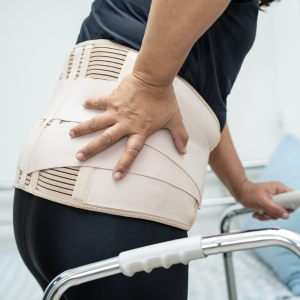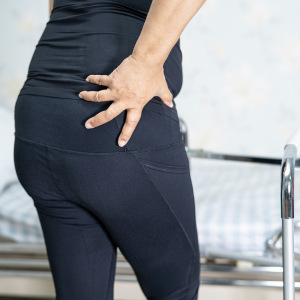Chiropractor Pretoria: We often see patients, especially young and active individuals, presenting with a specific kind of deep, nagging pain in the hip or groin. While a comprehensive exam is always needed, two conditions often show up together on the diagnostic scans: Femoroacetabular Impingement (FAI) and a Hip Labral Tear.
It’s a classic case of cause and effect. Think of it like a pebble in your shoe. The pebble itself is a problem, but it’s the constant rubbing and friction it causes that truly creates the painful blister. In the hip, FAI is the “pebble,” and the labral tear is the “blister” that results from the constant friction.
Let’s break down this common relationship.
What is Femoroacetabular Impingement (FAI)?
The hip acts as a ball-and-socket joint, where the “ball” (the upper end of the thigh bone) fits into the “socket” (the acetabulum in the pelvis). In a healthy hip, these two structures are perfectly shaped to glide smoothly over each other through a full range of motion.
FAI occurs when there’s a slight but significant mismatch in the shape of the ball or the socket. This bony abnormality causes the femur and acetabulum to “impinge” or bump into each other during certain movements, particularly when flexing the hip (like bringing your knee to your chest) or rotating it.
There are two main types of FAI:
- Cam Impingement: An extra bump of bone forms on the ball of the femur, which grinds against the rim of the socket. This is more common in athletic males.
- Pincer Impingement: The socket has an excessive bony rim that overhangs and pinches the neck of the femur. This is more common in middle-aged females.
In most cases, a combination of both is present.
What is a Hip Labral Tear?
The labrum is a ring of tough cartilage that acts like a gasket, creating a tight seal around the hip socket to keep the joint stable. It also deepens the socket, helping to hold the ball and socket together and ensuring smooth, fluid movement.
A hip labral tear is simply damage to this cartilage ring. This can be caused by an acute trauma (like a fall) but, more often, is the direct result of the repetitive stress from FAI.
The Connection: Why They Occur Together
The link between these two conditions is simple mechanics. When a person with FAI flexes or rotates their hip, the bony abnormality on the femur or acetabulum impinges directly on the labrum. This repetitive, high-stress friction and pinching over time frays, separates, and eventually tears the labral cartilage.
The symptoms of both conditions are often intertwined. The deep groin pain, clicking, or catching sensation that patients feel is frequently caused by the torn labrum, while the underlying cause is the bony impingement. Because the labrum is richly supplied with nerves, even a small tear can be a significant source of pain.
What to Expect at Your Chiropractic Examination
If you visit our practice, complaining of hip pain, a thorough examination is the first step to a proper diagnosis. We will:
- Take a Detailed History: We’ll ask about your symptoms, including what activities make the pain worse, the location of the pain, and if you experience any clicking or locking.
- Conduct Specific Orthopedic Tests: We’ll perform various tests to assess your hip’s range of motion, and we’ll specifically look for the “impingement test” where we flex and rotate the hip to see if it reproduces your pain.
- Assess Biomechanics: We’ll analyze your gait, posture, and the mechanics of your pelvis and spine to identify any contributing factors.
While a physical exam is highly suggestive, a definitive diagnosis requires imaging like an X-ray (to see the bony FAI) and often an MRI with contrast dye (to visualize the labral tear).
Chiropractic Treatment and Management
The good news is that many cases of FAI and labral tears can be managed effectively without surgery. The goal of chiropractic care is to address the biomechanical issues that contribute to the pain and improve the overall function of the hip.
Our approach includes:
- Chiropractic Adjustments: We can perform gentle, precise adjustments to the hip, pelvis, and lower back to optimize joint mechanics and reduce stress on the area.
- Soft Tissue Therapy: We use techniques to release tension in the surrounding hip flexors, glutes, and other muscles that become tight from compensating for the impingement.
- Rehabilitative Exercises: We’ll prescribe a targeted exercise program to strengthen the deep hip stabilizers and core muscles. This helps to improve the dynamic stability of the hip and takes stress off the joint.
- Activity Modification: We provide guidance on how to adjust daily activities and exercise routines to avoid the movements that cause impingement and pain.
While some advanced cases of FAI and labral tears may require surgical intervention to reshape the bones and repair the tear, a trial of conservative care is often the first and most effective step.
Don’t let hip pain sideline you. Understanding the connection between FAI and labral tears is the first step toward getting the right care. We’re here to help you get back to a life free from pain.
Joint Health Chiropractic Pretoria
501 Jochemus St, Erasmuskloof, Pretoria, 0048
0790919756








